Delve into the world of antique French shutter dogs. Learn how they work, their historical significance, and why they’re called “shutter dogs.”
I have an affinity for European antiques. I find them so beautiful but often, also incredibly functional! From time to time, I like to focus on specific antiques and provide their history and modern-day uses.
I’ve previously written about grain sacks, demijohns, ironstone, Bergere chairs, and more. Today, I thought I’d write about my pair of antique French shutter dogs and get your thoughts as to how I should use them!
This article will cover:
WHERE IT ALL STARTED
After a horrible medical scare in 2016, my husband and I decided we needed to travel more with our kids. So in 2018, my family took a trip to France and England. Each member of my family got to pick one place that they really wanted to visit. Our main itinerary took us from Provence, to Paris, then Normandy, with a final stop in London.
I chose Provence for lavender and antiques (no surprise there!).
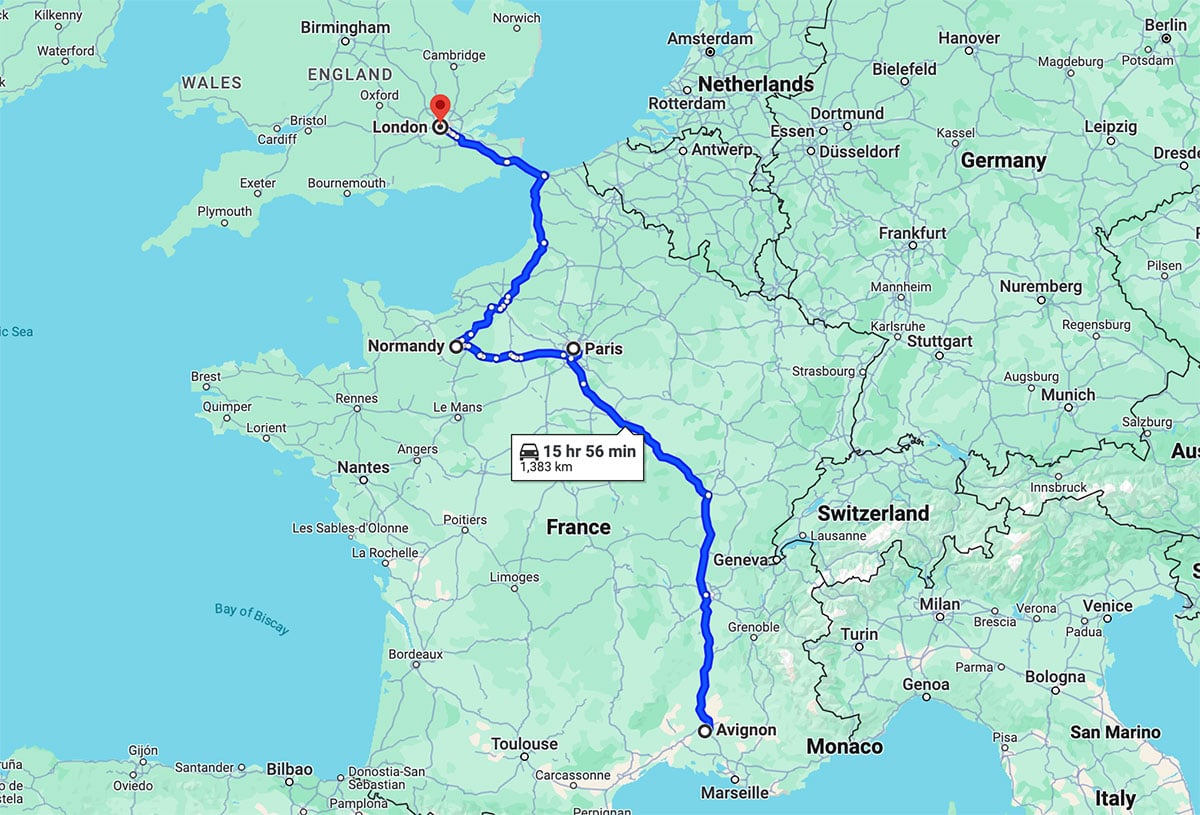
The first leg of our trip focused on Provence. We stayed in Aix-en-Provence and Avignon, with day trips to amazing places including Isle sur la Sorgue, Fontaine de Vaucluse, Valensole, Gordes, Roussillon, and Sénanque Abbey.
My goal was to smell the lavender and shop for antiques! And yes,it was an amazing trip!


On our second night, we stayed at the most charming AirBnb centrally located in Avignon.
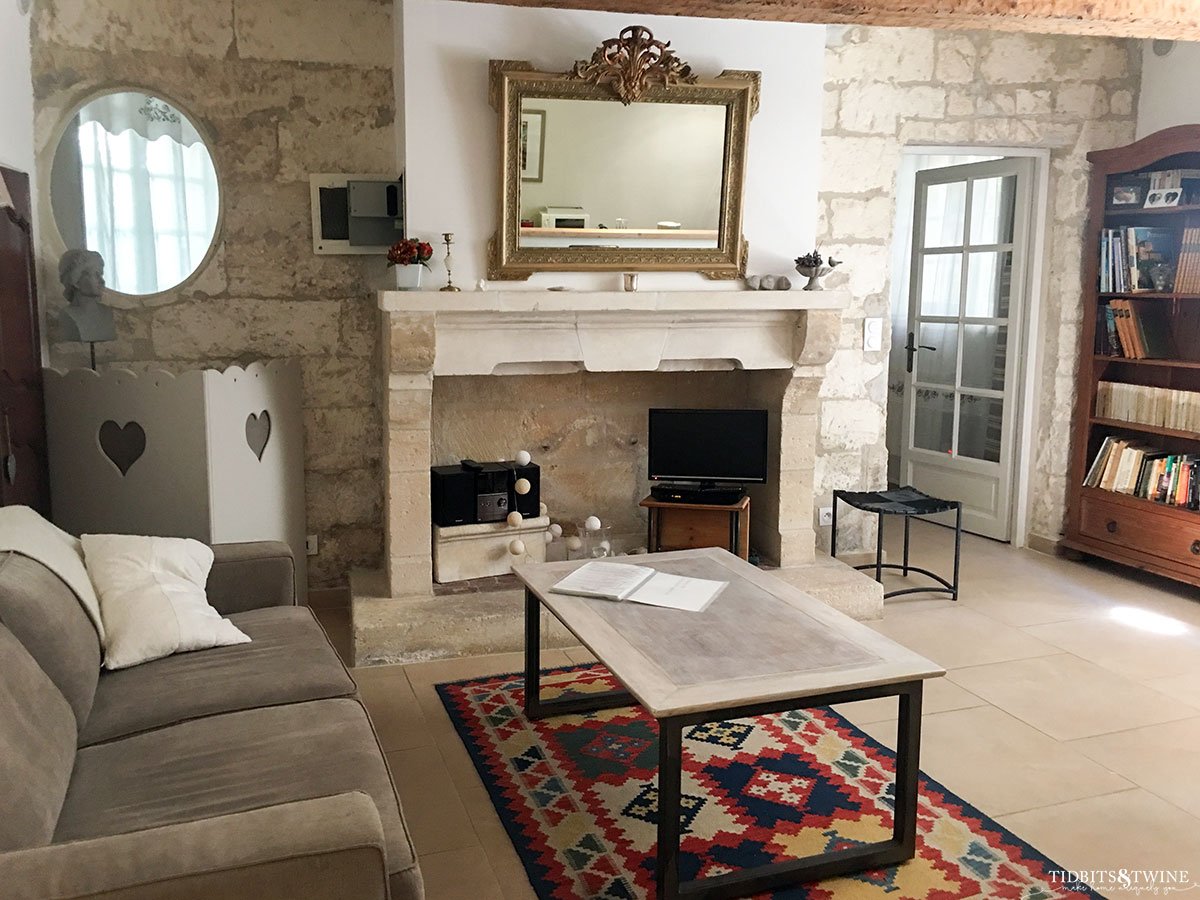
This is where I spotted Shutter Dogs for the first time and became smitten with them. Here is the white painted shutter dog on the bedroom window.
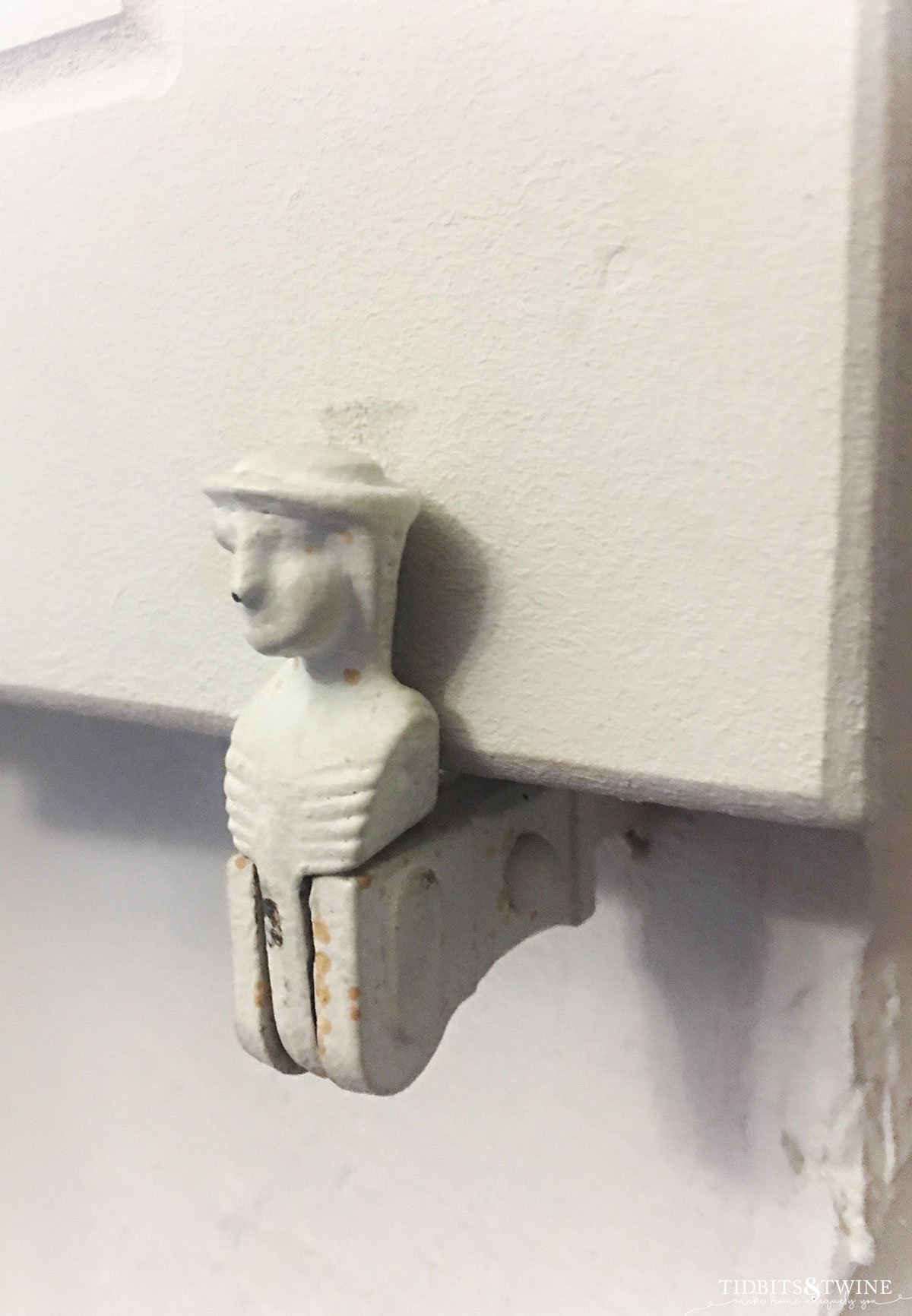
WHAT ARE SHUTTER DOGS?
Shutter dogs, also called tiebacks or holdbacks, are decorative metal pieces used to keep window shutters open against the side of a building. They usually come in two parts: a plate or bracket attached to the wall and a curving or L-shaped arm that extends to hold the shutter firmly in place. They’re not just functional; they add a unique visual element to a building’s exterior.
ANTIQUE FRENCH SHUTTER DOGS
French shutter dogs are particularly renowned for their intricate designs and attention to detail. Crafted from materials like wrought iron or brass, these pieces often feature ornate motifs such as scrolls, fleur-de-lis, or other decorative elements that reflect the artistic sensibilities of the period they were made in. Antique French shutter dogs not only serve a practical purpose but also act as miniature works of art, adding a touch of elegance to any façade.
Antique French shutter dogs can be found as shepherds, shepherdesses, lions, dogs, and more. They can be plain metal or painted to match the facade of the building.
HOW DO SHUTTER DOGS WORK?
Shutter dogs work in a beautifully simple way. The plate or bracket is fixed to the wall with a hook or hole for the arm of the shutter dog. To hold a shutter open, you swing the arm outward and position it over the edge of the shutter, securing it against the wall. The design and weight of the shutter dog ensure that shutters stay put, even on windy days.
Here’s my video showing how the shutter dog in my Avignon AirBnb worked!
OTHER NAMES AND VARIATIONS
These devices are known by different names in various cultures and regions. Besides shutter dogs, they’re also called shutter holdbacks, tiebacks, or holdfasts. Each name reflects their primary job—keeping shutters securely open.
THE STORY BEHIND THE NAME “SHUTTER DOG”
The name “shutter dog” is quite interesting. In English, “dog” has historically been used to describe objects that grip or hold something firmly. In the case of shutter dogs, it likely refers to how the device “dogs” or firmly secures the shutter in place, much like a loyal guard dog.
MY TRIP TO THE PROVENCE ANTIQUE MARKETS
I was so busy shopping that I asked Hubby to take pictures…hence, there aren’t a lot of them! Lol!
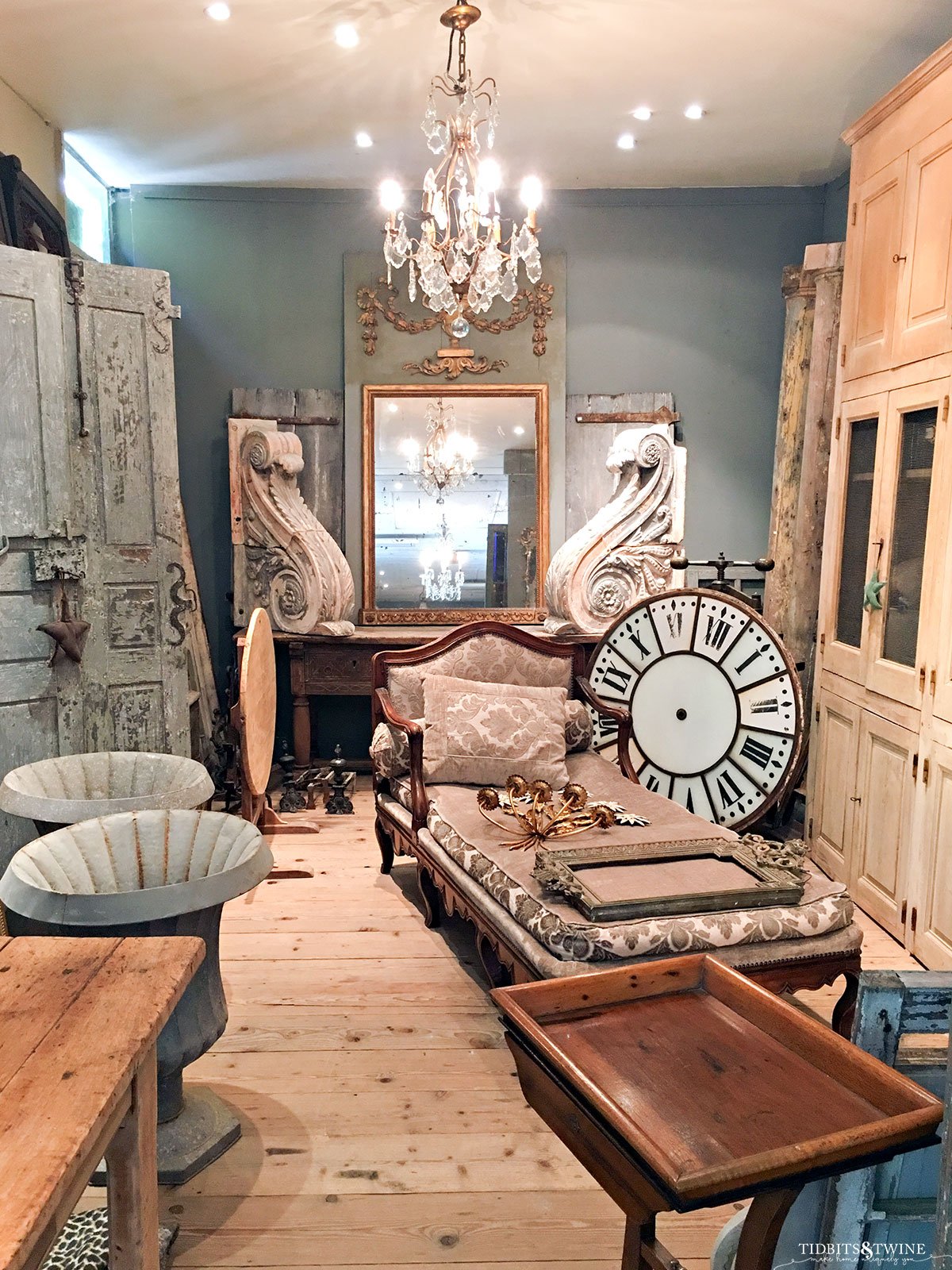
All of the stores help with shipping back to the U.S. via containers. I didn’t buy anything large enough that required shipping, though.
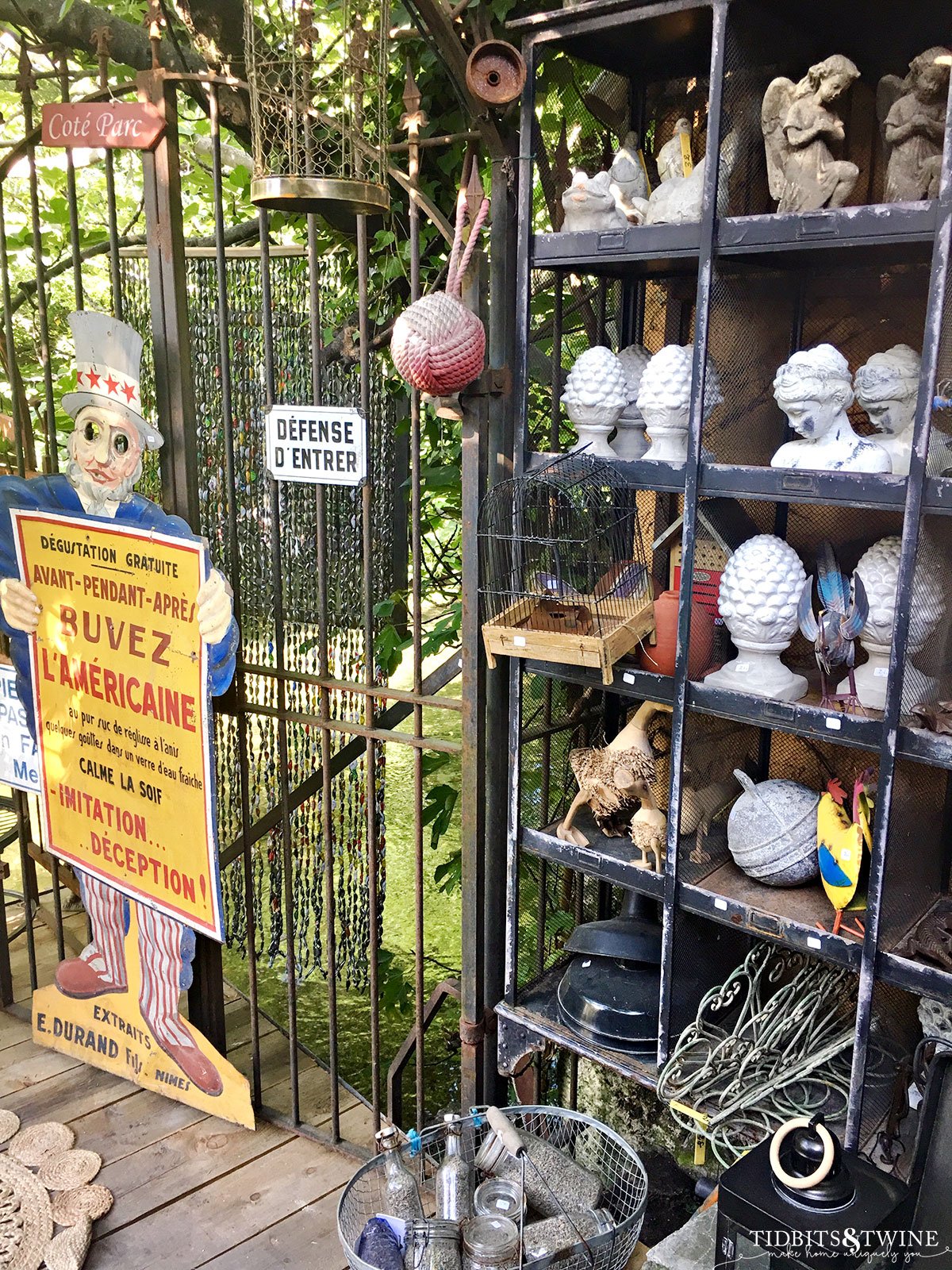
I stopped by some stores but I also visited a weekend street market.

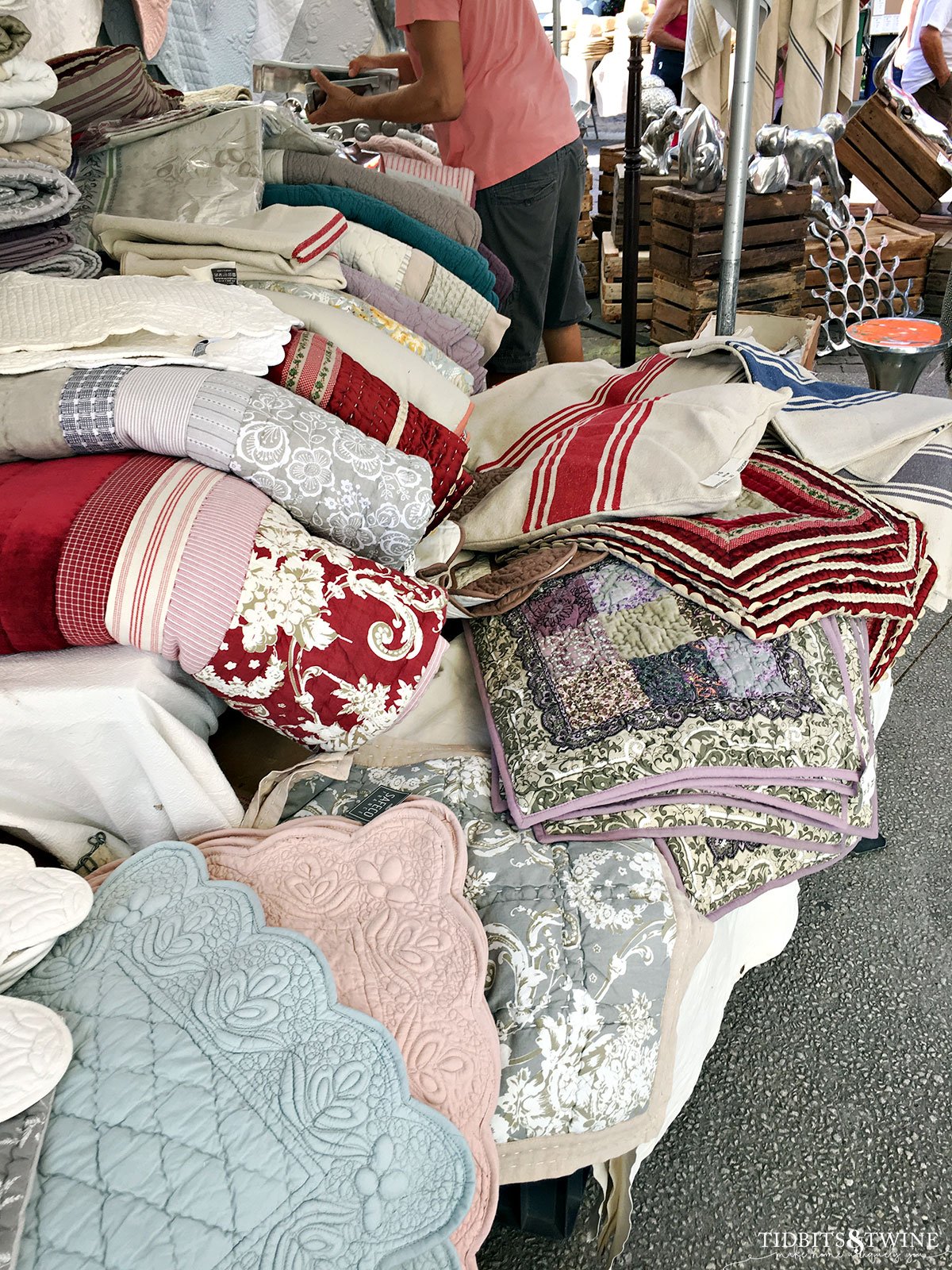
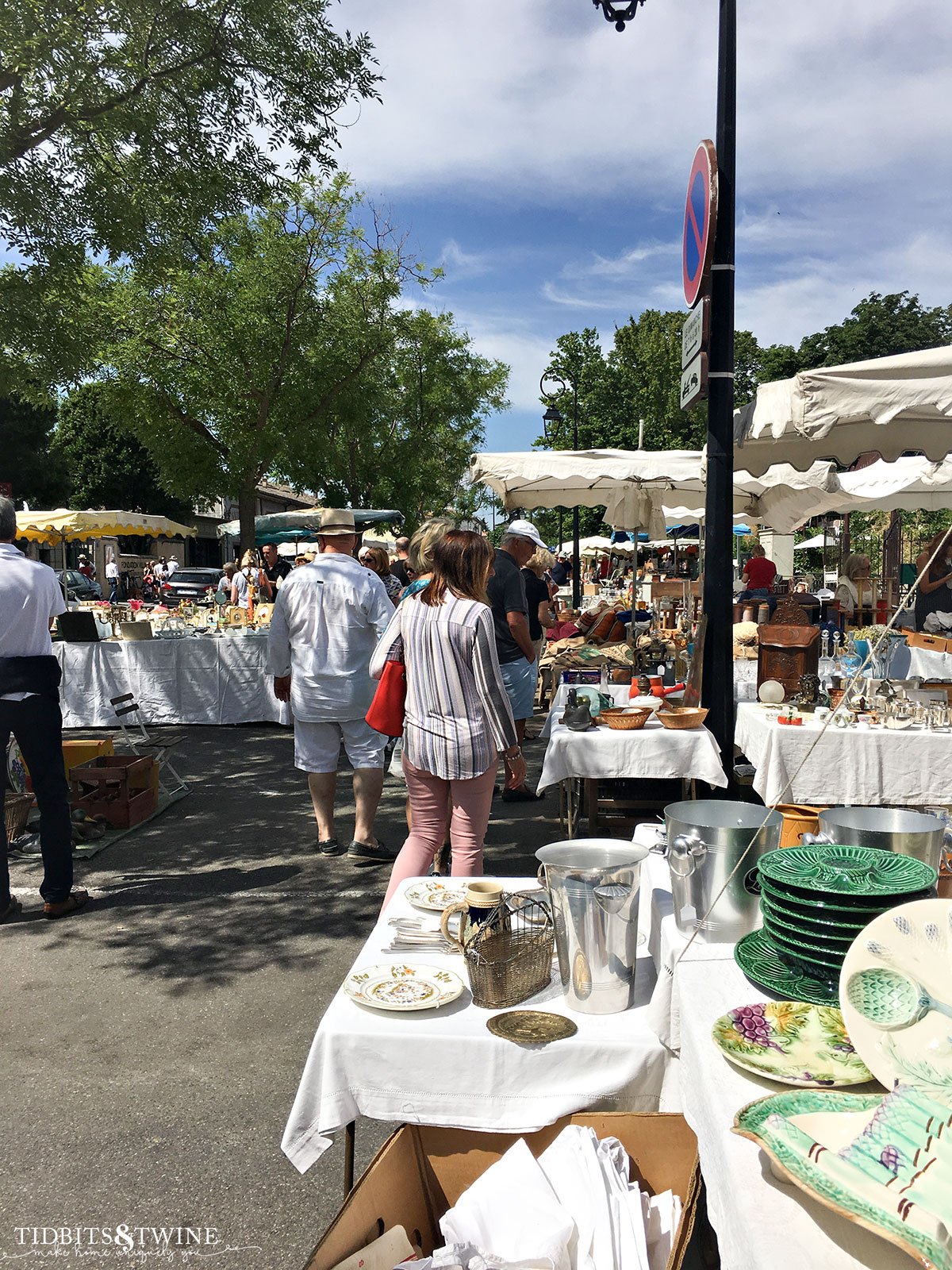
My French ANTIQUE SHUTTER DOGS
It was at the street market that I spotted a bowl full of shutter dogs. I went all the way to France and yes, I came home with shutter dogs!
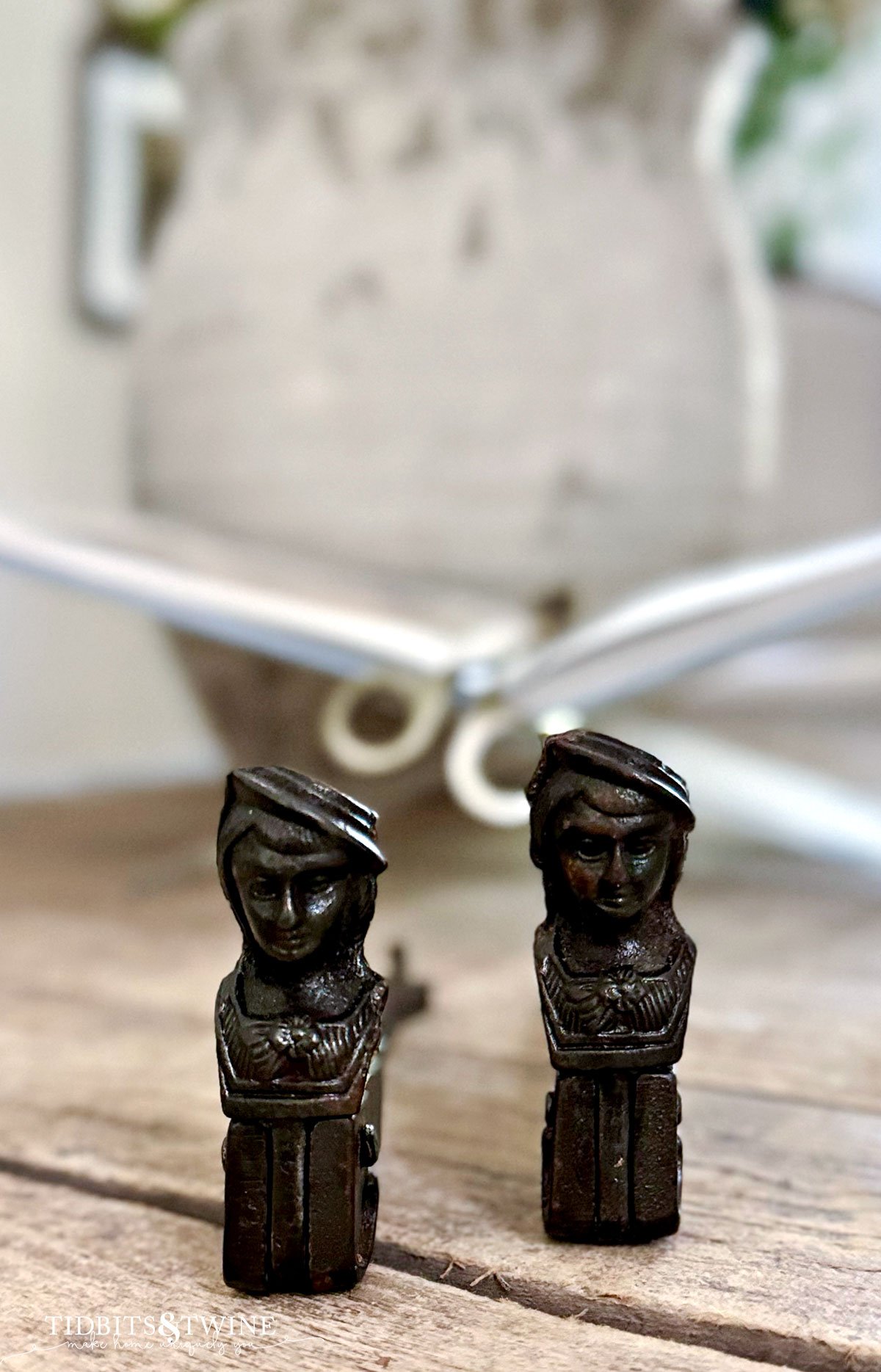
Aren’t they adorable? Well, maybe that’s not the right word. They do look a bit serious.

When I purchased them, I thought maybe I’d use them as doorsteps. But that would require bending down and releasing the shepherd head each time I wanted to close the door.
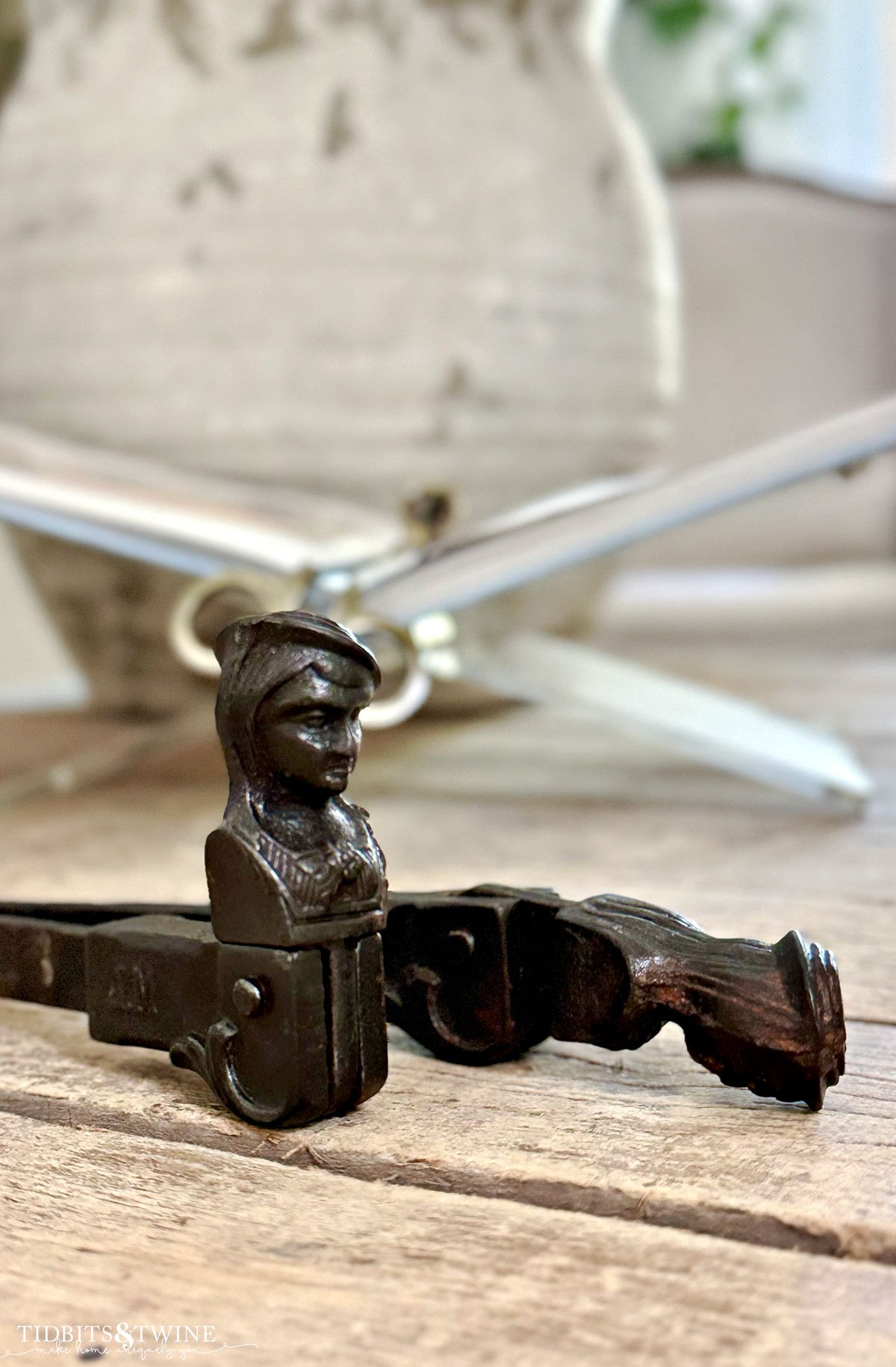
It’s been 6 years and I still haven’t figured out what to do with these beauties. I’m in California where we only have decorative shutters that are affixed to the house, so I don’t have any actual shutters that need holding.

If you’ve got a suggestion for where I should use these, please let me know!
MORE ANTIQUE ARTICLES
- The Secret about Gadget Canes and Why You’ll Love Them!
- How to Collect and Decorate with Antique Bread Boards
- Decorating with Baskets {18 Everyday Ideas}
- The Ultimate Guide to French Bergère Chairs
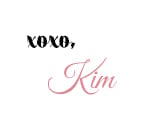
Join the Community
Let’s keep in touch! Get exclusive artwork plus the latest news delivered directly to your Inbox!
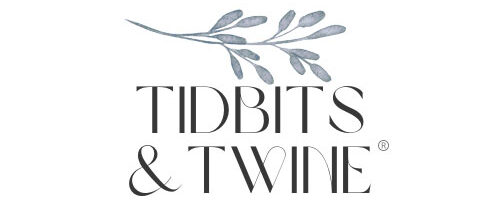
Thinking outside the box. Brass shelf edge rails seem popular at present. Could these be adapted to sit under each end of a shelf and hold a dark thin rod across the front of shelf’s edge to hold things on the shelf?
Hi Kim! What a magical trip! I think I’ve only ever seen scroll versions of “shutter dogs”—these have so much more personality!
Would they work as bookends? I can’t tell how long they are, but tucked into a bookshelf comes to mind first.